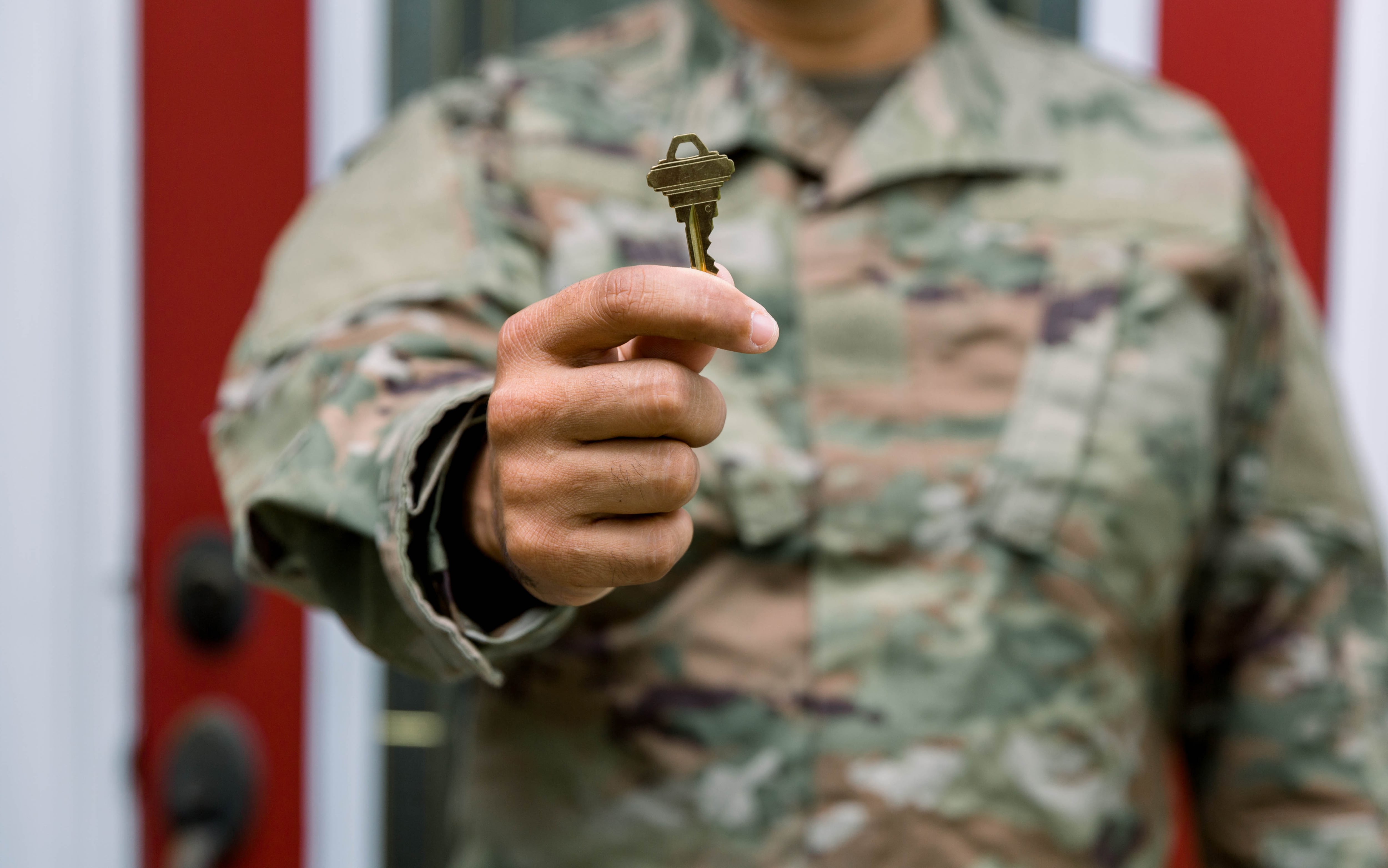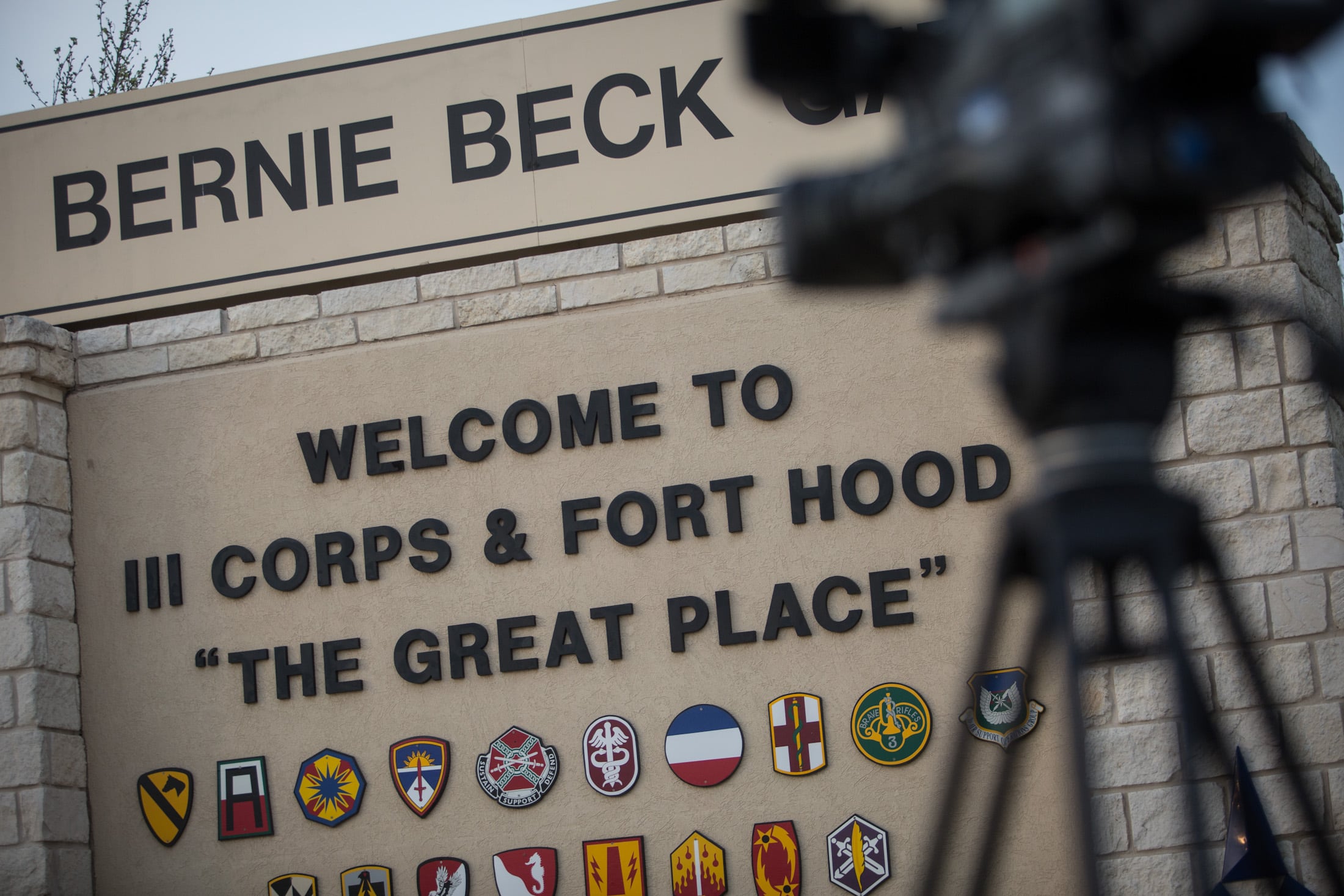It's a great time to earn a master-at-arm's gold badge.
The Navy's security force has begun a three-year build up that will add nearly 700 sailors, improving their advancement outlook and giving first enlistment sailors a better shot at a re-enlistment bonus for skills that are increasingly needed as threats to bases and sailors grow.
It's the second major plus up for the community since 1999, when the master-at-arms skill was just over 1,000 sailors. It's now the service's third-largest specialty at 9,600 sailors and growing. The specialty offers predictable tours to commands around the world and the training to be a professional law enforcement officer.
The uncertainty in the world and the threats facing the United States, from the Chattanooga terror attack to a sentry's shooting death on destroyer Mahan, has led to the builld-up likely to prove a career boon for E-6 and below sailors in what's now called the B640 Navy Occupational Specialty.
"This expansion grew out of a 2013 assessment the Navy [Inspector General] did into Navy security worldwide," said Lt. Cmdr. David Macias, community manager for enlisted security forces. "That assessment along with what was learned from the unfortunate Navy Yard Shooting, the USS Mahan incident and others captured what the shortfalls were and we're working to fill those now."
Those reports identified shortfalls in security, finding a need for more sailors and better training.
As a result, the Navy is looking to bring in non-designated sailors from the street and fleet, and also is seeking experienced petty officers to convert.
This has opened opportunities for the most junior sailors to strike into the skill in apprenticeship year groups and created conversion opportunities for rated sailors in nine of the last 14 year groups, with openings for senior petty officers all the way back to year group 2002. The junior sailors may qualify for a $30,000 re-enlistment bonus.
There's also opportunity for Selected Reserve security sailors to return to active-duty.
Needed: Proven leaders
The expansion is slated to add 746 new sailors to the field over three years. This means, Macias said, there’s opportunity this year for conversion as well as next year.
Because the skill has a wide variety of assignment types — aircraft carrier security teams, harbor patrol boats, dog handling — Macias said they'd like to recruit sailors from a wide swath of the Navy to take advantage of skills many already have.
Macias said they're looking for proven leaders who want a new challenge at the E-5 and E-6 level.
"The ones we'd most like to convert are those who share skills common with our community, such as the gunner's mates and the [aviation ordnancemen], both of which are familiar with weapons," he said."We'd love to see packages from sailors with specific NECs such as 0812 small arms instructor or the 0814 crew served weapons instructor and 9501, which is an instructor billet."
The master-at-arms communities also loves to attract Seabees. That's been the focus of the "Bees to Badges" program for a few years that streamlines the conversion process for Seabees, who have been stymied for years for advancement due to a major downsizing in the last few years.
This program's future hinges on Seabee manning. If that continues improving, then Seabee conversion will still be desirable, but the community manager may be more reluctant to let them go.
"Obviously they have a number of skills that we need," Macias said. "They already have defensive combat skills and know how to operate convoys as well as [have] proficiency in weapons — all are obviously a good fit for us."
Good, old sailor skills are also in demand. In particular, that's anyone with a second class swimmer qualification or boat coxswain's qualifications, who are likely good candidates for harbor patrol jobs.
Because all those entering the security career field are required to complete 'A' school, regardless of what paygrade they convert at, getting sailors who already have other critical skills is key as the service can save training dollars to get sailors qualified.
"We are overall looking at 252 convert-in opportunities, and 98 [Reserve component] to [active component] conversions for FY 16, bringing our community health to 102 percent — with new billets coming online FY17, our current three-year plan supports 285 covert-ins," Macias said. "RC to AC will be monitored close and [we] anticipate to terminate when we reach our goal."
Currently the only reserve sailors being brought back to active-duty are those who have completed 'A' school.
With the plus up, training dollars are tight and getting tighter, so the community wants to maximize who they bring back to active-duty by incurring the least possible cost.
Technically, he said, the window has closed for non-security sailors to convert into the skill while coming on active-duty — but it's still open a crack. That's because, he said, sailors may have other skills that help them make the case to be a Navy cop.
"We're willing to look on a case by case basis at sailors who have those other skills we need," he said.
Armed and respected
As Navy jobs go, being a military cop requires a sailor with not only the proper skills, but the right attitude. They are among the few in the Navy who carry weapons most of the time and the permission to use them if threatened.
New master-at-arms spend their first months on the job learning to be a Navy cop.
"Anyone considering this job needs to be comfortable with the idea of deadly force and the possibility they will have to use it in the performance of their job," said Master Chief Petty Officer (EXW/SW) Jerry Mosley, Navy Region Mid-Atlantic's senior enlisted security sailor.
"But that said, you have to like to work with people and interact with people on a regular basis," he said. "That's important, but equally important to the job is being very professional but at the same time, not being afraid to speak up when something is wrong.
"That's because having a strong moral compass and the ethics to do what's right regardless while at the same time being able to handle positions of authority and not be tempted to abuse that power — these are very important considerations for anyone."
Master-at-arms aren't a typical Navy skill and they don't have a strict sea to shore rotation policy. They're one of the few skills the Navy rotates between assignments in the United States and at stations abroad — and all tours of duty, regardless of the location, are 36-months long — allowing sailors predictable careers.
But that doesn't mean no sea time. In fact, there are enlisted security aboard every Navy ship, ranging from small teams aboard destroyers and cruisers to 70-person security forces aboard aircraft carriers.
Most of those converting see their first tours at an installation, either in the United States or overseas or on an aircraft carrier. Another possibility is at one of the Navy's two strategic weapons facilities, located in Kings Bay, Georgia and in Bangor, Washington.
A significant part of the plus-up is happening aboard aircraft carriers, where Naval Air Forces ordered the elimination of collateral duty master-at-arms jobs. The goal is to maintain a more highly trained and professional force.
For years, nearly half of carrier security forces were junior sailors from other departments temporarily assigned, not unlike working on the mess decks or in laundry.
With manning levels already tight ship-wide, many of the other departments and the communities decided they could no longer spare experienced maintainers and leaders to be cops.
"The move to assign the responsibility of aircraft carrier security specifically to the community contributed to the overall growth of the skill Navy-wide," said Capt. Ray Benedict, Fleet Forces Command's anti-terrorism and force protection officer.
"This initiative didn't change the crew-size for carriers, as a number of the carrier's existing billets were re-designated as MA billets, the move did drive the overall growth of the community."
In the end, 48 billets were converted to the MA skill, bringing the ship's security force to 72-strong. It's the largest numbers of professional security assigned to any ship since the Navy and Marine Corps eliminated Marine detachments on ships afloat in the 1990s.
"Currently 5 of the 10 CVNs have or are in the process of obtaining the MA plus-up," Macias said.
The rest, Benedict said, will occur over the next couple of years.
The installation plus-up was a direct results of review, assessments and requests from installation commanders, as well as a spate of security threats at military bases.
"The land-based security force increase provides Navy security departments additional manpower across the enterprise and allows for a better training cycle that supports rapid reaction to security issues," Benedict said. "The manpower increases will be allocated among the capability areas where shortfalls exist."
Tips from the Top
For anyone making the move from another career field, their first command and few years on the beat are crucial.
No one know that better than Mosley, a master chief who rose to electrician's mate second class before converting. A tour as a collateral security petty officer made him realize he wanted to convert to master-at-arms.
He ended up in on the ground floor of the largest skill expansion since World War II.
"Most new MAs who report to an installation start their career checking IDs at the gate," Mosley said. "It's a good place to start, but what you want to do is get qualified as a patrolman as quick as you can."
It's as a patrolman, Mosley and other MAs say, that you learn how to be a Navy cop.
The beauty of the MA skill, he said, was once you are qualified and have your first tour under your belt — there are amazing jobs waiting down the line.
His favorite was working at Navy Expeditionary Combat Command as the senior enlisted and team leader of the Embarked Security Teams.
These teams of 12 sailors, led by a chief, embark on ships that don't have native security, such as Military Sealift Command vessels. Similar teams embark with Navy aircraft, he said and provide security for squadrons in dangerous places.
And right now, the most critical skill in the MA community — and one that gives first-term sailors a re-up bonus — is becoming a working dog handler, sniffing for explosives and contraband.
The opportunities don't stop there. For sailors seeking to reach even higher, the Navy has recently reorganized the security officer community, beginning a phase out of their warrant officers and converting many billets to limited duty officers.
"I don't want to speak for our officer community manager, but the sundown of the warrants and shipping requirements to LDO allows more sailors to enter the community at the E-6 level," Macias said. "This gives them much more career longevity to stick around and fill billets as O-5s and even O-6s and be the senior enlisted leadership of Navy security of the future."
Mark D. Faram is a former reporter for Navy Times. He was a senior writer covering personnel, cultural and historical issues. A nine-year active duty Navy veteran, Faram served from 1978 to 1987 as a Navy Diver and photographer.



